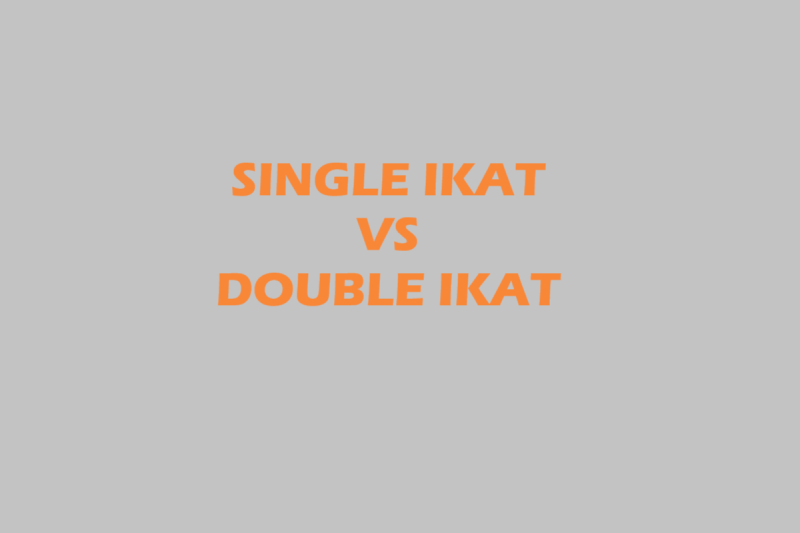In this article, we'll explore Ikat fabrics, focusing on the distinctions between single Ikat and double Ikat. Let's start by understanding what Ikat is.
What is Ikat?
Ikat is a technique that follows a form of tie-dye to create patterns on yarns before they are woven into fabric. These patterns emerge during the dyeing process, where the yarns are strategically bound and dyed to form specific motifs once woven. The resulting fabric made from these patterned yarns is known as Ikat fabric. For clarity, we'll refer to these as Ikat-dyed yarns.
The difference between Ikat and double Ikat
Let's understand the difference between a single Ikat and a double Ikat.
Single Ikat:
This type involves Ikat-dyed yarns used either in the warp (vertical yarns) or the weft (horizontal yarns) direction, but not both. If the Ikat-dyed yarns are used in the warp, it is called a warp Ikat, and if used in the weft, it is known as a weft Ikat. The other direction typically uses solid-colored yarns.
Double Ikat:
In double Ikat, the Ikat-dyed yarns are used in both warp and weft directions. This technique is intricate, requiring precise dyeing and weaving to ensure the patterns align perfectly.
Comparative analysis:
In the following, a comparison is shown based on the 4 key factors design patterns, visual appeal, craftsmanship, and cost of production.
- Patterns: Single Ikat often features basic and predominantly geometric motifs, such as triangles and diamonds. Double Ikat, however, allows for more complex and sharply defined patterns due to the dual use of Ikat-dyed yarns in both weaving directions.
- Visual Appeal: Double Ikat designs generally appear more vibrant and have clearer edges compared to Single Ikat.
- Craftsmanship: Double Ikat requires highly skilled weavers due to the complexity of aligning patterns from both warp and weft yarns.
- Manufacturing costs and End product price: To make double Ikat highly skilled labour is required. This makes double Ikat fabrics more expensive to produce compared to the single Ikat.
Related posts:
What is Ikat: Ikat Fabric, Dyeing techniques, Origins, and Weaving Designs
Batik Printing: An Overview, Dyeing Method, Its History and Application
Pochampalli Sarees – Brief History and Its Production Process

